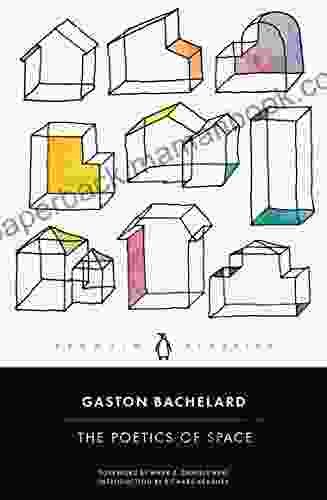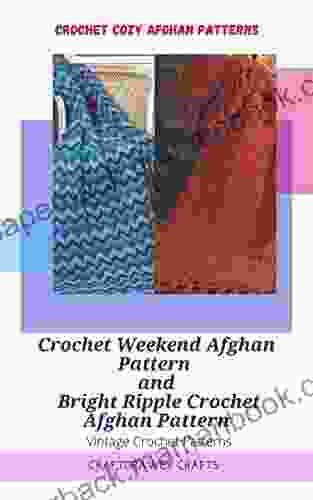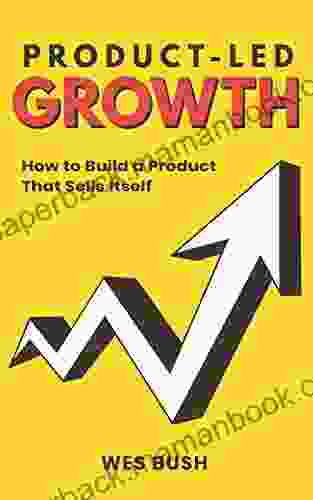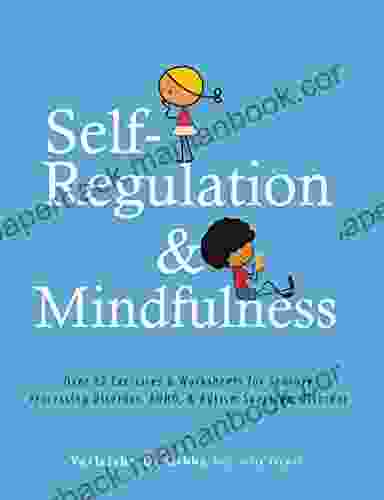How to Build Products that Sell Themselves: A Comprehensive Guide to Product-Led Growth

4.5 out of 5
| Language | : | English |
| File size | : | 3244 KB |
| Text-to-Speech | : | Enabled |
| Screen Reader | : | Supported |
| Enhanced typesetting | : | Enabled |
| Word Wise | : | Enabled |
| Print length | : | 278 pages |
| Lending | : | Enabled |
In today's highly competitive business landscape, it's no longer enough to rely on traditional marketing and sales tactics to drive growth. Customers are more demanding than ever before, and they expect products that are not only valuable but also easy to use and enjoyable to interact with. This is where product-led growth (PLG) comes in.
PLG is a customer acquisition and retention strategy that focuses on delivering value to users through the product itself. Instead of relying on external marketing campaigns, PLG companies focus on building products that are so compelling that users will naturally discover, engage with, and ultimately purchase them. This approach can lead to a number of benefits, including:
- Increased user adoption: When users love your product, they are more likely to adopt it and become regular users.
- Reduced churn: Happy users are less likely to cancel their subscriptions or switch to a competitor.
- Increased revenue: Products that sell themselves can generate more revenue than products that require a hard sell.
The Principles of Product-Led Growth
PLG is based on a number of key principles, including:
- User-centric design: PLG companies put the user at the center of everything they do. They design their products with the user's needs in mind, and they constantly gather feedback to improve the user experience.
- Data-driven decision making: PLG companies use data to inform every aspect of their product development and marketing efforts. They track user behavior, analyze customer feedback, and use this information to make data-driven decisions about product improvements and go-to-market strategies.
- Continuous iteration: PLG companies are constantly iterating on their products and processes. They believe that there is always room for improvement, and they are always looking for ways to make their products better.
The Product-Led Growth Framework
The PLG framework consists of a number of key steps, including:
- Define your target market: The first step is to define your target market and understand their needs. What are their pain points? What are their goals? Once you know who you are building for, you can start to design a product that meets their needs.
- Identify your product's core value: What is the one thing that your product does better than anyone else? What is the unique value that you offer to your customers? Once you know your product's core value, you can focus on developing and refining that value proposition.
- Build a user-friendly product: Your product should be easy to use and enjoyable to interact with. The user interface should be intuitive, and the onboarding process should be smooth. Users should be able to get started with your product without any hassle.
- Collect and analyze user data: It's important to collect and analyze user data to track progress and make informed decisions. This data can help you identify areas for improvement, understand how users are interacting with your product, and get feedback on what's working and what's not.
- Iterate and improve: PLG is an iterative process. Once you have launched your product, you need to continue to collect feedback and iterate on the product to improve the user experience and increase adoption.
Real-World Examples of Product-Led Growth
There are a number of companies that have successfully implemented PLG strategies. Some of the most notable examples include:
- Dropbox: Dropbox is a file hosting and sharing service that has gained millions of users through its easy-to-use interface and generous free tier. Dropbox users can easily share files and folders with other users, and they can access their files from any device.
- Slack: Slack is a team communication and collaboration tool that has become popular due to its user-friendly design and powerful features. Slack allows teams to communicate in real time, share files, and collaborate on projects.
- Shopify: Shopify is an e-commerce platform that makes it easy for businesses to create online stores. Shopify offers a wide range of features, including templates, payment processing, and shipping integration. Shopify users can create and manage their online stores with no coding experience.
Building products that sell themselves is not easy, but it is possible. By following the principles and steps outlined in this guide, you can create products that users love and that drive business growth.
4.5 out of 5
| Language | : | English |
| File size | : | 3244 KB |
| Text-to-Speech | : | Enabled |
| Screen Reader | : | Supported |
| Enhanced typesetting | : | Enabled |
| Word Wise | : | Enabled |
| Print length | : | 278 pages |
| Lending | : | Enabled |
Do you want to contribute by writing guest posts on this blog?
Please contact us and send us a resume of previous articles that you have written.
 Top Book
Top Book Novel
Novel Fiction
Fiction Nonfiction
Nonfiction Literature
Literature Paperback
Paperback Hardcover
Hardcover E-book
E-book Audiobook
Audiobook Bestseller
Bestseller Classic
Classic Mystery
Mystery Thriller
Thriller Romance
Romance Fantasy
Fantasy Science Fiction
Science Fiction Biography
Biography Memoir
Memoir Autobiography
Autobiography Poetry
Poetry Drama
Drama Historical Fiction
Historical Fiction Self-help
Self-help Young Adult
Young Adult Childrens Books
Childrens Books Graphic Novel
Graphic Novel Anthology
Anthology Series
Series Encyclopedia
Encyclopedia Reference
Reference Guidebook
Guidebook Textbook
Textbook Workbook
Workbook Journal
Journal Diary
Diary Manuscript
Manuscript Folio
Folio Pulp Fiction
Pulp Fiction Short Stories
Short Stories Fairy Tales
Fairy Tales Fables
Fables Mythology
Mythology Philosophy
Philosophy Religion
Religion Spirituality
Spirituality Essays
Essays Critique
Critique Commentary
Commentary Glossary
Glossary Bibliography
Bibliography Index
Index Table of Contents
Table of Contents Preface
Preface Introduction
Introduction Foreword
Foreword Afterword
Afterword Appendices
Appendices Annotations
Annotations Footnotes
Footnotes Epilogue
Epilogue Prologue
Prologue K Black
K Black Liezel Graham
Liezel Graham Michael Margolis
Michael Margolis Leslie Schrock
Leslie Schrock Kristen Carter
Kristen Carter Larry Hite
Larry Hite Hilaire Belloc
Hilaire Belloc Chanelle Arterbridge
Chanelle Arterbridge Janette K Klingner
Janette K Klingner Suzi Weiss Fischmann
Suzi Weiss Fischmann Dick Pirozzolo
Dick Pirozzolo Dana Thomas
Dana Thomas Lionel Martellini
Lionel Martellini Daniel Brown
Daniel Brown Herman E Daly
Herman E Daly Marialisa Demora
Marialisa Demora Sara Driscoll
Sara Driscoll Scott F Neve
Scott F Neve Heather L Clark
Heather L Clark Scott Sigler
Scott Sigler
Light bulbAdvertise smarter! Our strategic ad space ensures maximum exposure. Reserve your spot today!

 Curtis StewartDelving into Gaston Bachelard's Poetics of Space: Perception, Imagination,...
Curtis StewartDelving into Gaston Bachelard's Poetics of Space: Perception, Imagination,... Ralph TurnerFollow ·2k
Ralph TurnerFollow ·2k August HayesFollow ·3.7k
August HayesFollow ·3.7k DeShawn PowellFollow ·2.6k
DeShawn PowellFollow ·2.6k Ruben CoxFollow ·12.9k
Ruben CoxFollow ·12.9k Nick TurnerFollow ·6.3k
Nick TurnerFollow ·6.3k Dwight BlairFollow ·17.9k
Dwight BlairFollow ·17.9k Jesus MitchellFollow ·4.8k
Jesus MitchellFollow ·4.8k Denzel HayesFollow ·2.5k
Denzel HayesFollow ·2.5k

 Jeremy Mitchell
Jeremy MitchellPlay We Now On Christmas Violin Christmas: A Heartfelt...
Play We Now On...

 Terry Bell
Terry BellTales from the Road: Confessions of an Atlanta Uber...
In the vibrant...

 Ervin Bell
Ervin BellThe French Admiral: A Gripping Naval Adventure with Alan...
In the vast expanse of...

 Henry David Thoreau
Henry David ThoreauCrochet Cozy Afghan Patterns: Crochet Weekend Afghan...
to Crochet...

 Orson Scott Card
Orson Scott CardAn Archaeological View Of The Industrialization Of North...
The industrialization of North America was a...

 Josh Carter
Josh CarterClipboard Christmas Skits by Tom Spence: A Festive...
A Christmas...
4.5 out of 5
| Language | : | English |
| File size | : | 3244 KB |
| Text-to-Speech | : | Enabled |
| Screen Reader | : | Supported |
| Enhanced typesetting | : | Enabled |
| Word Wise | : | Enabled |
| Print length | : | 278 pages |
| Lending | : | Enabled |










